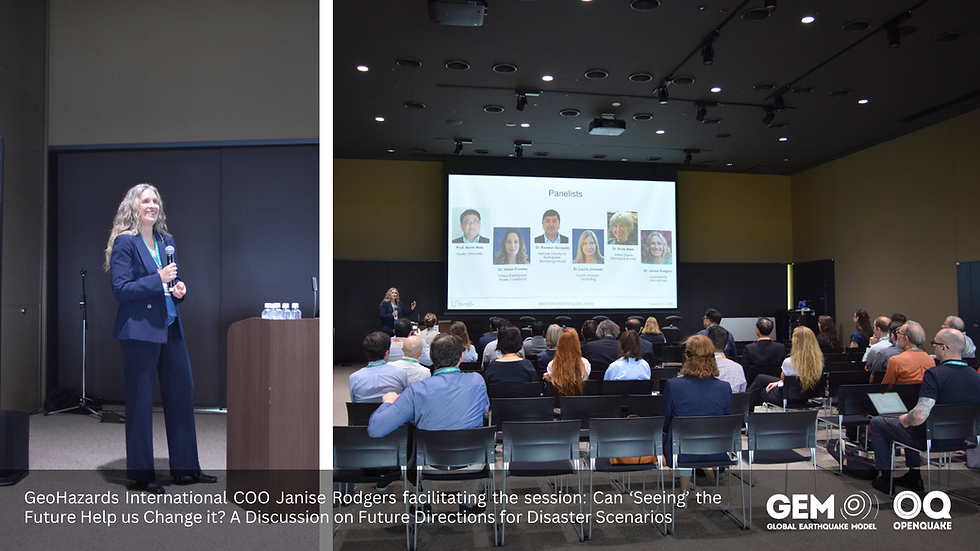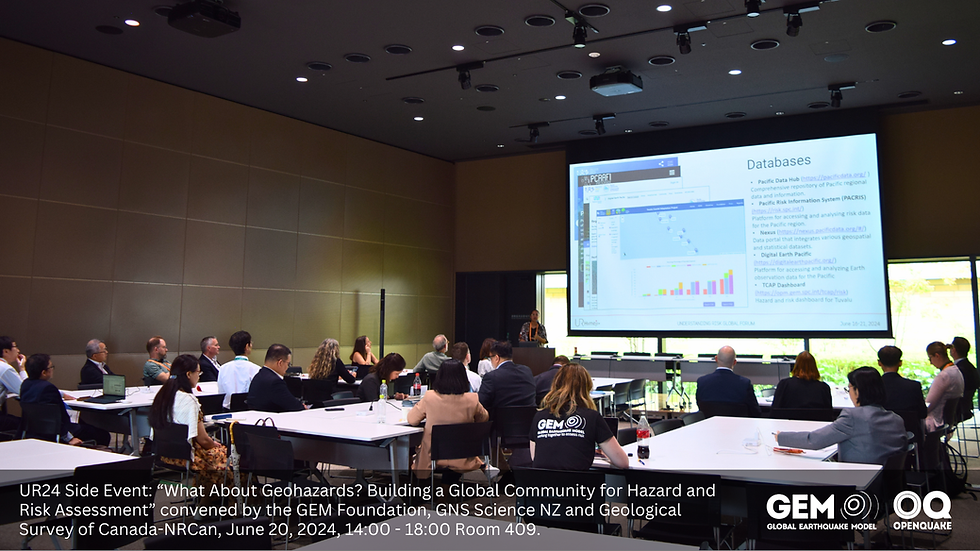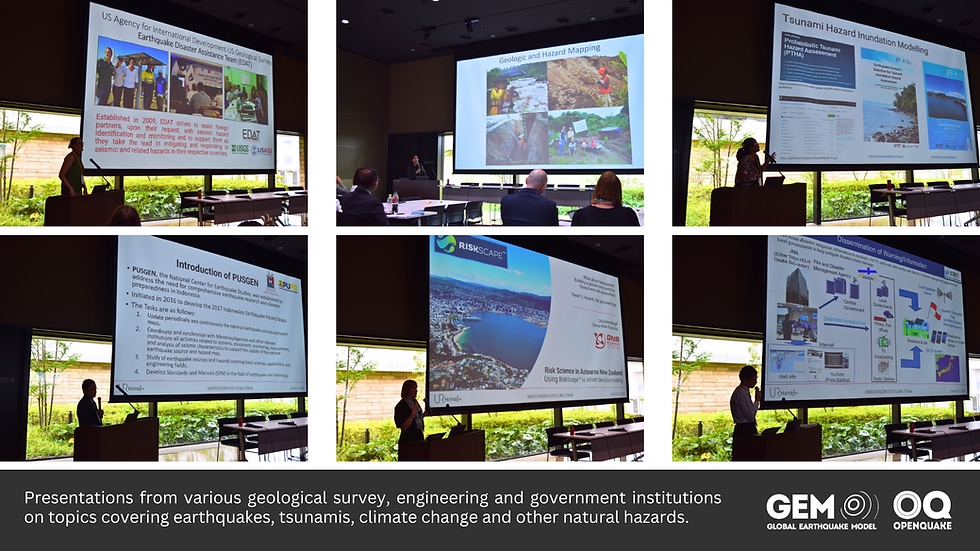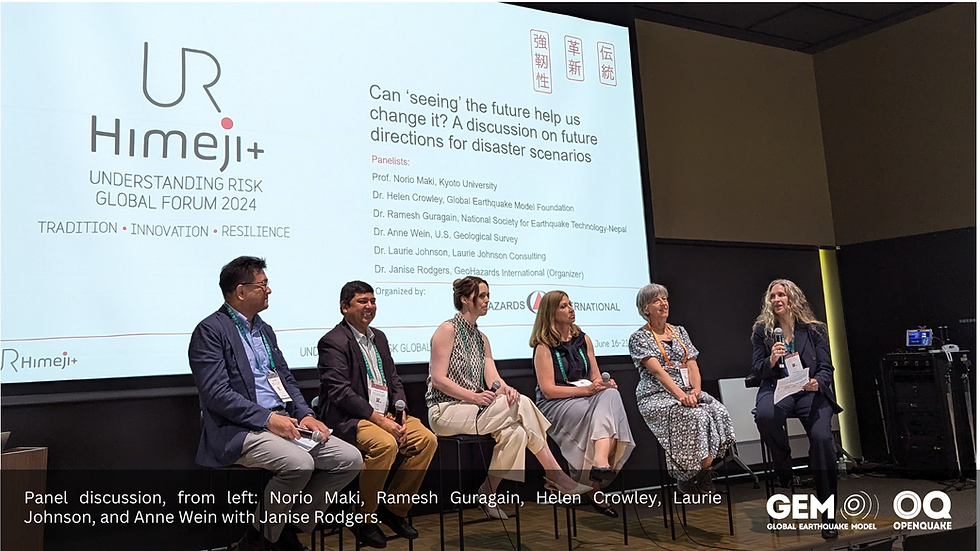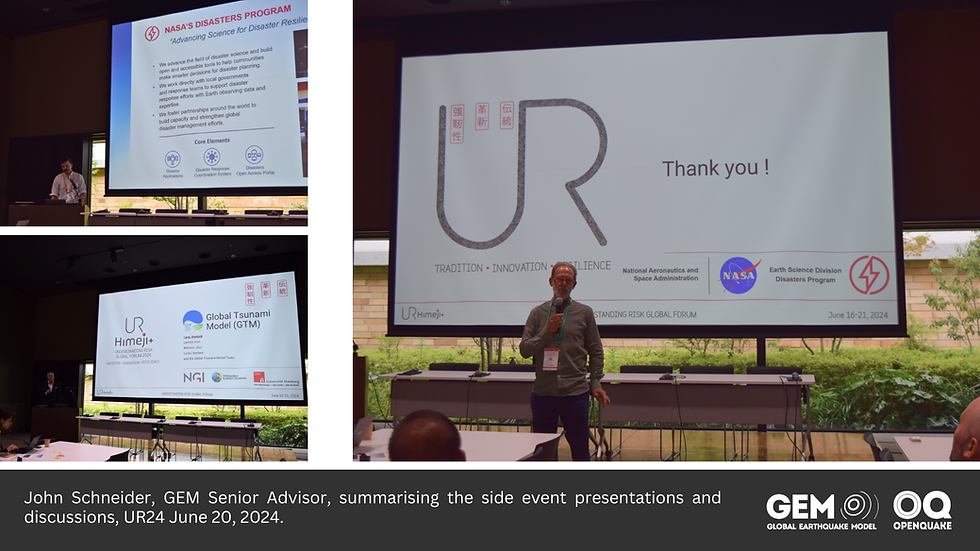Understanding Risk Global Forum 2024 (UR24)
June 16-21, 2024
Himeji, Japan
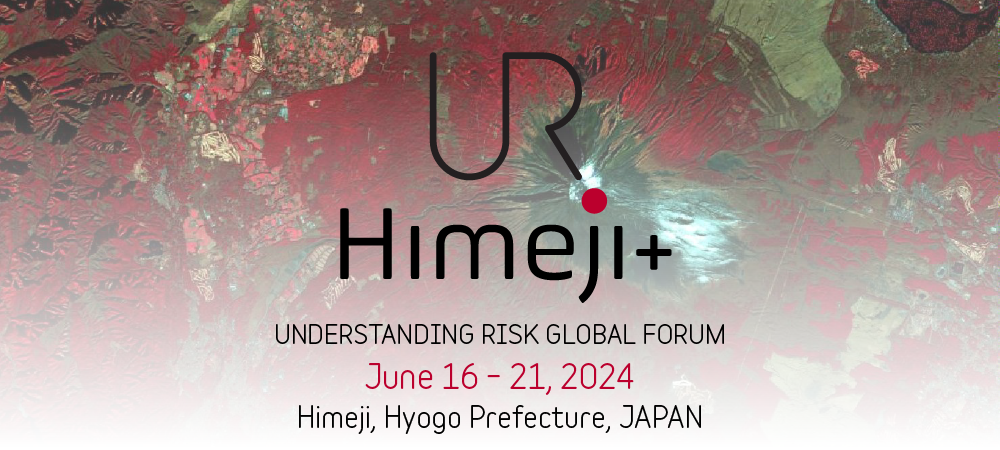
Image Credit: UR24 (https://understandrisk.org/ur24/)
OVERVIEW
The Global Earthquake Model (GEM) Foundation is proud to participate in the Understanding Risk Global Forum 2024 (UR24) in Himeji, Hyogo Prefecture, Japan, from June 16th to 21st, 2024. GEM, in collaboration with the World Community of Geological Surveys WCOGS, will be actively involved on June 18th-20th, leading a technical session titled "Building Geohazards Risk Assessment Capacity at the National Level." GEM will also host a focus event on the same topic for more in-depth discussions, allowing for a more interactive exchange of ideas and promoting collaboration among stakeholders.
GEM invites attendees from national governments, disaster risk reduction agencies, academia, and other stakeholders interested in strengthening earthquake risk assessment capacities to:
Participate in our technical session to gain in-depth knowledge of our work.
Attend our side event for focused discussions and networking opportunities.
Visit our exhibition booth, in the “friends of NASA” space, to explore our open seismic risk assessment resources.
Convenors/Speakers
The State of Practice in Risk Assessment and Needs for Improvement at National to Sub-National Level

Nicolas Pondard
1C - Panelist

Shubharoop Ghosh
1A - Panelist

Ron Eguchi
1A - Moderator

Humberto Lopez
1B - Moderator

Renato Solidum, Jr.
1C- Panelist
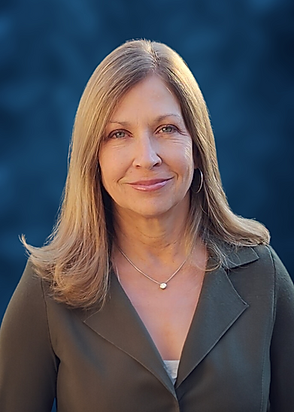
Laurie Johnson
1A - Panelist
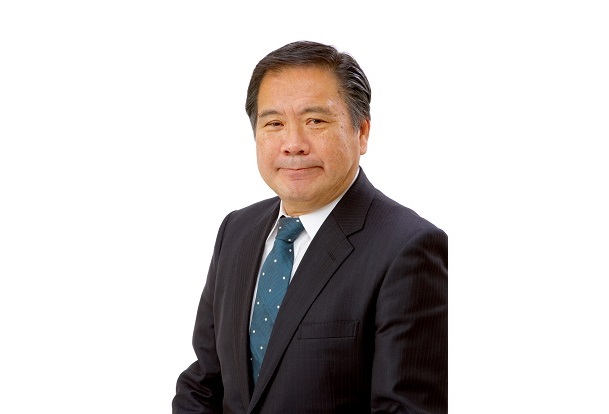
Takara Kaoru
1B - Speaker
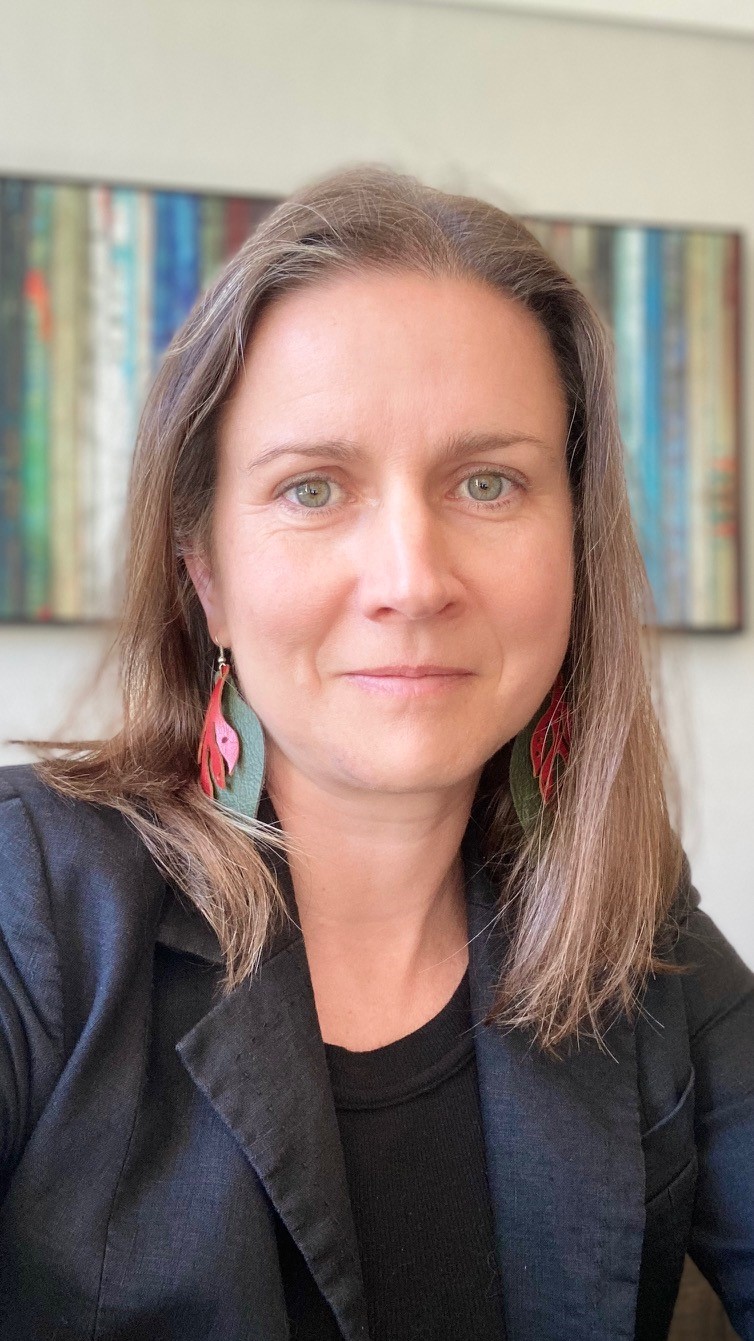
Malaika Ulmi
1C - Convenor

Anil Pokharel
1C - Panelist
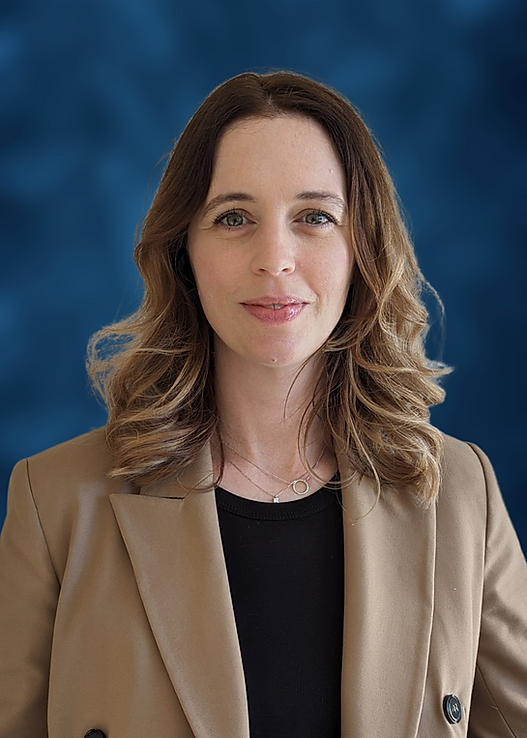
Helen Crowley
1A - Panelist

Helen Crowley
1B - Speaker
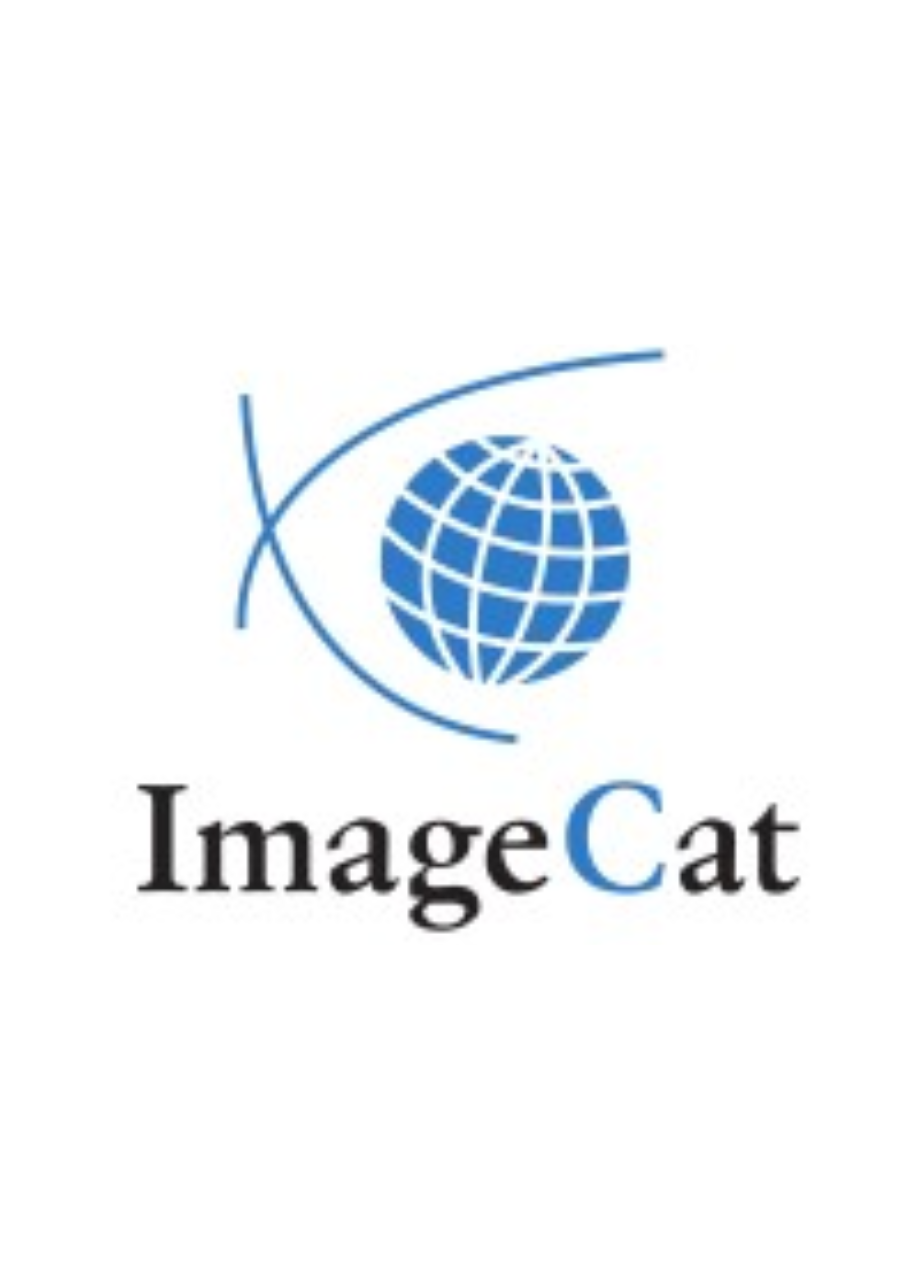
ImageCat, Inc.
1A - Convenor

Shunichi Koshimura
1A - Panelist

The World Bank
1B - Convenor

Renato Solidum Jr.
1B - Speaker
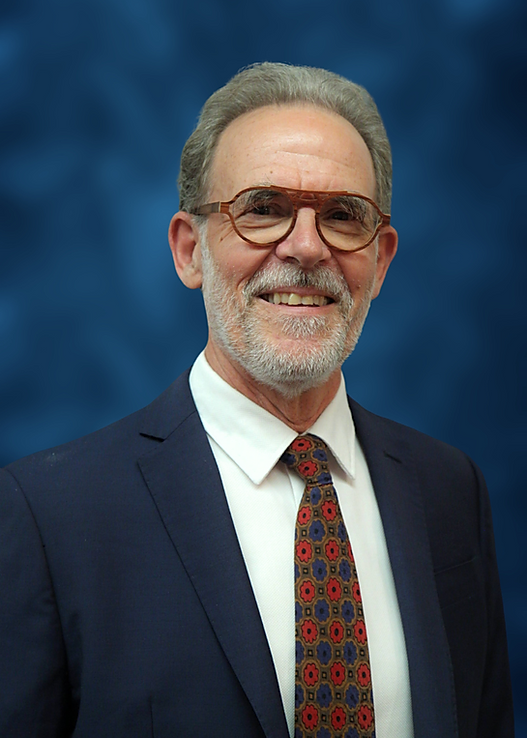
John Schneider
1C - Convenor
AGENDA
The State of Practice in Risk Assessment and Needs for Improvement at National to Sub-National Level
Geohazards such as earthquakes, volcanic eruptions, tsunamis and landslides represent a significant proportion of the global disaster risk. Yet the capabilities for assessing risk at national to sub-national level are often insufficient. This session will discuss the state of practice and identify the needs for improving hazard and risk assessment capabilities. A complimentary Focus Day event will propose the way forward through the development of a global collaboration network.
Time | Topic | Speaker | Organisation |
|---|---|---|---|
Karim Aljawhari | |||
Fatemah Jalayer | |||
Maria Durante | |||
Finn Løvholt
| |||
Romeu Vicente | |||
Vitor Silva | GEM | ||
Christopher Brooks | |||
Daniela Di Bucci | DPC Italy | ||
Jamal Dabbeek | GEM | ||
Catalina Yepes | GEM | ||
Helen Crowley | GEM | ||
Christopher Brooks | GEM | ||
Kirsty Bayliss | GEM | ||
Manuela Villani | GEM | ||
Marco Pagani | GEM | ||
Catalina Yepes Estrada | GEM | ||
Anirudh Rao | GEM | ||
Al Mouayed Bellah Nafeh | GEM | ||
Martina Caruso | GEM | ||
Alejandro Calderón | GEM | ||
Marco Baiguera | GEM | ||
16:45-17:00 | Q&A | Moderator | GEM |
Catarina Costa | |||
Meera Raghunandan | |||
Cláudia Pinto | |||
Al Mouayed Nafeh | |||
Christopher Brooks | |||
Maria Durante | |||
Finn Løvholt
| |||
Stavroula Fotopou | |||
Fatemah Jalayer | |||
Romeu Vicente | |||
Vitor Silva | GEM | ||
PSHA models for the oceans (Pacific Region) | |||
Development of the Pacific Islands (PAC) Model | |||
16:20-16:45 | Expansion plans under the FORCE project covering small island communities | Kirsty Bayliss | GEM |
16:00-16:20 | Overview of GEM's Global Seismic Hazard Mosaic | Kendra Johnson | GEM |
Anil Pokhrel | Chief Executive, National Disaster Risk Reduction & Management Authority, Nepal | ||
Nicolas Pondard | Senior Disaster Risk Management Specialist, The World Bank | ||
Helen Crowley | Secretary General, GEM | ||
Dominik Lang | Director, Natural Hazards Division, NGI, Norway | ||
Shinji Takarada | Chief Senior Researcher, Geological Survey of Japan | ||
Robert Emberson | Associate Program Manager, NASA Earth Applied Sciences Program | ||
Janise Rodgers | COO, Geohazards International | ||
Ramesh Guragain | Deputy Executive Director, National Society for Earthquake Technology (NSET) Nepal | ||
Discussion: Forming a global geohazards risk assessment network (community of practice) | Malaika Ulmi and John Schneider | GSC and GEM | |
Renato Solidum, Jr. | Secretary, Department of Science & Technology-Philippines | ||
Lindsay Davis | Manager, Global Portfolio-Earthquake Hazard & Risk, USAID/USGS | ||
Christina Magill | Natural Hazard Risk Scientist, GNS Science, NZ | ||
Anselmo Pedrazzi | Executive Coordinator, Applied Geology Division, (LAMESO-SGB), Brazil | ||
Celestin Mahinda | Scientific Director, Research Center of Natural Sciences, Democratic Republic of Congo | ||
Teresito Bacolcol | Director, Phivolcs, Philippines | ||
Mabelline Cahulogan | Supervising Science Research Specialist, -Phivolcs, Philippines | ||
Asaka Iwaki | Chief Researcher, National Research Institute for Earth Science and Disaster Resilience (NIED), Japan | ||
Hendriyawan Djazilus | Head, Ocean Engineering Program, ITB-Indonesia | ||
Takeshi Sato | Senior Engineer, Earthquake and Tsunami Div, Japan Meteorological Agency | ||
Panel 2: Existing Global Networks | John Schneider | Senior Advisor, GEM | |
Malaika Ulmi | Nat. Hazards & Climate Change Geoscience Program Manager, Geo Survey of Canada | ||
Judith Giblin | Ocean & Coastal Risk Data Analyst, South Pacific (SPC) | ||
Panel 1: Assessing National Capability | John Schneider and Malaika Ulmi | GEM and GSC | |
Gill Jolly | Chief Science Advisor, MBIE, GNS Science, NZ | ||
Malaika Ulmi | Nat. Hazards & Climate Change Geoscience Program Manager, Geo Survey of Canada | ||
Nicolas Pondard | Senior Disaster Risk Management Specialist, The World Bank | ||
Renato Solidum, Jr. | Secretary, Department of Science & Technology-Philippines | ||
Anil Pokharel | Chief Executive, National Disaster Risk Reduction & Management Authority (NSET), Nepal | ||
Shunichi Koshimura | Deputy Director, IRIDes-Tohoku University | ||
Shubharoop Ghosh | Vice President, ImageCat, Inc. | ||
Laurie Johnson | CEO, Laurie Johnson Consulting | ||
Helen Crowley | Secretary General, GEM | ||
Maksud Kamal | Vice Chancellor, Dhaka University | ||
18 June
10:30 - 12:30 (Plenary) | Plenary: Richter Resilience: Advancing Seismic Protection Worldwide | The World Bank | ----- |
Ron Eguchi | CEO, ImageCat, Inc. | ||
Takara Kaoru | President, NIED Japan | ||
Helen Crowley | Secretary General, GEM | ||
Renato Solidum Jr. | Secretary, Department of Science and Technology Philippines-PH | ||
Humberto Lopez | Director, World Bank Country Turkyie | ||
Helen Crowley | Secretary General, GEM | ||
Laurie Johnson | CEO, Laurie Johnson Consulting | ||
Ramesh Guragain | Deputy Executive Director, National Society for Earthquake Technology-Nepal (NSET) | ||
Anne Wein | Principal investigator, U.S. Geological Survey | ||
Norio Maki | Professor, Kyoto University | ||
Malaika Ulmi | Nat. Hazards & Climate Change Geoscience Program Manager, Geo Survey of Canada | ||
19 June
09:30 - 10:30
Room 409 | Can ‘Seeing’ the Future Help us Change it? A Discussion on Future Directions for Disaster Scenarios | Janise Rodgers | COO, GeoHazards International |
18 June
09:30 - 10:30
Medium Hall | Symphony of Tradition and Innovation: Orchestrating Global Resilience in Diverse Communities | ImageCat, Inc. | ----- |
20 June
14:00 - 18:00
Room 409 | What About Geohazards? Building a Global Community for Hazard and Risk Assessment | John Schneider | Senior Advisor, GEM |
18 June
12:30 - 13:30
Room 409 | What About Geohazards? The State of Practice in Risk Assessment and Needs for Improvement at National to Sub-National Level | John Schneider | Senior Advisor, GEM |
1 July, Monday 14:30-15:45 (Stage presentations, Suite 9) | Managing earthquake risk through multi-lateral partnerships | J.F. Schneider | GEM |
M.J. Barrera | Suramericana S.A Colombia | ||
M. Edwards | Geoscience Australia | ||
E. Wandari | Arup, Jakarta | ||
14:30-16:00 | Forward-looking earthquake risk modelling and quantification: recent advances and perspectives | C. Galasso | University College London |
G. Cremen | University College London | ||
V. Silva | GEM | ||
J. Baker | Stanford University | ||
D. Lallemant | Nanyang Technological University | ||
S. Loos | University of Michigan | ||
A. Barbosa | Oregon State University | ||
A. Calderon | GEM | ||
C. Mesta | Scuola Universitaria Superiore IUSS | ||
C. Huang | NORSAR | ||
R. Guragain | NSET Nepal | ||
M. Polese | Università degli Studi di Napoli Federico II | ||
14:30-16:00 | Macroseismology: current studies and future directions | D. Wald | USGS |
J. Schwarz | Weimar University | ||
V. Silva | GEM | ||
P. Sbarra | INGV | ||
A. Hortascu | Applied Technology Council USA | ||
T. Goded | GNS Science | ||
G. Grunthal | GFZ Potsdam | ||
R. Spence | Cambridge Architectural Research UK | ||
2 July, Tuesday 10:30-11:45 (Stage presentations - Amber 5) and 14:30-15:45 (Monitor presentations - Virtual Walkway) | National seismic risk modelling efforts: challenges, achievements and future goals | V. Silva | University of Aveiro/GEM |
H. Crowley | GEM | ||
A.B. Acevedo | EAFIT University Colombia | ||
T. Hobbs | Natural Resources Canada | ||
K. Jaiswal | USGS | ||
C. Arteta | Universidad del Norte, Barranquilla Colombia | ||
A. Papadopoulos | Swiss Federal Institute of Technology | ||
K. Pitilakis | University of Thessaloniki Greece | ||
2 July, Tuesday 09:00-10:15 (Monitor presentations - Virtual Walkway) | G. Trendafiloski | Impact Forecasting | |
M. Kolaj | Natural Resources Canada | ||
C.-H. Chan | E-DREaM Center Taiwan | ||
M. Irsyam | Bandung Institute of Technology Indonesia | ||
H. Fujiwara | NIED Japan | ||
T. Allen | Geoscience Australia | ||
E.H. Field | USGS | ||
N. Abrahamson | UC Berkeley | ||
3 July, Wednesday 09:00-10:15 (Monitor presentations - Virtual Walkway) | Matt C. Gerstenberger | Seismologist, GNS Science NZ | |
2 July, Tuesday 09:00-10:15 (Stage presentations, Amber 5) and 10:30-11:45 (Monitor presentations - Virtual Walkway) and 14:30-15:45 (Stage presentations, Amber 5) | Mark D. Petersen | Supervisory Research Geophysicist, USGS | |
Anirudh Rao | GEM | ||
13:30-15:00 | Earthquake Loss Modelling for Disaster Risk Management: Linking Field Missions to Probabilistic Risk | Vitor Silva | GEM |
1 July, Monday 10:30-11:45 (Stage presentations, Amber 5) and 14:30-15:45 (Monitor presentations - Virtual Walkway) | Advances in seismic hazard analysis | Marco Pagani | Head of Seismic Hazards, GEM |
17:05 - 17:15 | ATLAS overview | Andres Abarca | GEM |
17:15 - 17:25 | Underlying hazard science | Marco Pagani | GEM |
17:25 - 17:35 | Underlying software | Paul Henshaw | GEM |
17:35 - 17:45 | User testimonial | Stevan Gavrilovic | Arup |
17:45 - 18:00 | Access and Q&A | Andres Abarca | GEM |
17:00 - 17:05 | Welcome & Introduction | Helen Crowley | GEM |
10:15-10:25 | Overview of GEM's 2023 product release | Helen Crowley | GEM |
11:05-11:20 | Walkthrough of access to GEM's 2023 products | Andres Abarca | GEM |
10:25-10:45 | GEM's global seismic hazard mosaic and future developments | Marco Pagani | GEM |
10:45-11:05 | GEM's global seismic risk mosaic and future developments | Vitor Silva | GEM |
11:20-11:55 | Q&A and Discussion | John Schneider | GEM |
11:55-12:00 | Closing Remarks | Helen Crowley | GEM |
10:05-10:15 | International Day for DRR and GEM's global hazard and risk maps | John Schneider | GEM |
10:00-10:05 | Welcome | Helen Crowley | GEM |
15:50-16:30 | Update of the Global Hazard Model | Marco Pagani | GEM |
Session 2: How has it been used? (June 14th, morning) | |||
10:55-11:10 | Application to insurance/financial risk modelling | Crescenzo Petrone | Gallagher Re, |
14:00-14:05 | Introduction: Session 3 | Lindsay Davis | USGS/USAID, |
15:40-16:10 | Keynote Lecture: International Macroseismic Scale | David Wald | United States Geological Survey (USGS) |
17:10-17:30 | Launch of the Earthquake Scenarios Database | Catalina Yepes | GEM |
10:25-10:55 | Coffee break | ||
16:30-17:10 | Update of the Global Risk Model | Vitor Silva | GEM |
11:40-12:20 | Discussion Panel 2: Using GEM products to make a difference | Panel 2 Moderator:
Laurie Johnson (Laurie Johnson Consulting)
Panelists: Alanna Simpson, Tiegan Hobbs, Miguel Mora, Tso-Chien Pan, Crescenzo Petrone, Angelica Zanichelli, Paola Traversa | |
18:00-19:30 | Aperitivo | ||
14:35-14:50 | Triggered or secondary effects: Landslide | Farrokh Nadim | NGI � Norwegian Geotechnical Institute |
11:10-11:25 | Mitigating Risks in Georgia's Emergency Facilities: Arup and GEM's Collaborative Risk Assessment | Angelica Zanichelli | Arup |
15:00-15:10 | Flash introductions of poster and demo session | Posters and demos presenters | |
09:55-10:10 | Colombia Earthquake Hazard model + Cali | Miguel Mora | I+R Consultores en Ingenier�a y Riesgos |
10:10-10:25 | Urban Seismic Risk Assessment | Tso-Chien Pan | Institute of Catastrophe Risk Management-NTU |
9:00-9:10 | Introduction: Session 2 | Joerg Steffensen | Hannover Re |
13:15-13:20 | Introduction to the presentations | Iain Stewart | Royal Scientific Society, Jordan |
13:50-14:20 | DASK National Insurance perspective of Turkey EQ | Ahmet Bu?ra Ceyhan | DASK |
12:20-14:00 | Lunch break - Posters and Demonstrations | ||
9:40-09:55 | Canadian Earthquake Risk Model | Tiegan Hobbs | Natural Resources Canada (NRCan) |
14:50-15:10 | Incorporation of NASA products in global hazard and risk assessment | Shanna McClain | NASA |
16:40-16:55 | Future Exposure and Risk to natural hazards | Alejandro Calderon | GEM |
9:10-09:40 | Keynote Lecture: Landscape of DRR initiatives - past, present and future | Alanna Simpson | World Bank Group |
13:10-13:15 | Opening Address (video message) | Mami Mizutori | United Nations Office for Disaster Risk Reduction |
15:10-15:40 | Coffee break | ||
15:40-15:50 | Session 1: What has been developed? | Sonia Talwar | NRCan |
14:20-14:35 | Triggered or secondary effects: Liquefaction | Ellen Rathje | University of Texas at Austin, Geotechnical Engineering |
16:25-16:40 | Using GEM products to support rapid loss assessment | Alberto Michelini | Istituto Nazionale di Geofisica e Vulcanologia (INGV) ARISTOTLE |
16:55-17:25 | Closing Discussion Panel: The role of GEM to 2030 | Closing Panel Moderator:
John Schneider (GEM)
Panelists:: Laurie Johnson, Sibylle Steimen, Kishor Jaiswal, Jenty Kirsch-Wood, Matthias Schmid, Sangeeta Singh | |
16:10-16:25 | Systemic or cascading infrastructure risk | Astha Poudel | Aristotle
University of Thessaloniki |
14:20-15:00 | Intro Discussion Panel: Lessons learned regarding post-earthquake impact assessment | Intro Panel Moderator:
Michael Ewald (SwissRe)
Panelists: Nilesh Shome, Jay Guin, Mustafa Erdik,
Sinan Akkar,
Jaime Abad
Perez | |
17:30-18:00 | Discussion Panel 1: Development and use of the Global earthquake models | Panel 1 Moderator:
Helen Crowley (Eucentre)
Panelists: Vitor Silva, Marco Pagani, Chung-Han Chan, Paul Della Marta,
Daniela
Di Bucci | |
Session 3: Where are we going? (June 14th, afternoon) | |||
13:20-13:50 | Lessons learned from the 2023 Kahramanmara?, T�rkiye earthquakes: Modeling aspects of insured portfolio losses | Sinan Akkar | Turk Reinsurance Inc.,
Principal Catastrophe Modeler (keynote speaker) |
15:10-15:40 | Coffee break - Posters and demonstrations | ||
14:05-14:20 | Triggered or secondary effects: Tsunami | Stefano Lorito | Istituto Nazionale di Geofisica e Vulcanologia (INGV) |
13:00-13:10 | Introductory remarks | John Schneider | GEM |
17:25-17:30 | Final Wrap/Closing | Jorg Steffensen | Hannover Re |
11:25-11:40 | Site-specific seismic hazard assessment for nuclear and hydropower facilities in France | Paola Traversa | Electricit�
de France (EdF) |
REGISTRATION
Stay tuned for more details!
We will provide further registration details for GEM's sessions at UR24 in the coming weeks. For inquiries, please contact info@globalquakemodel.org.
Links
EXHIBITION
Visit GEM's booth in the "Friends of NASA" area. Explore open seismic risk resources and chat with our earthquake experts!
 |  |
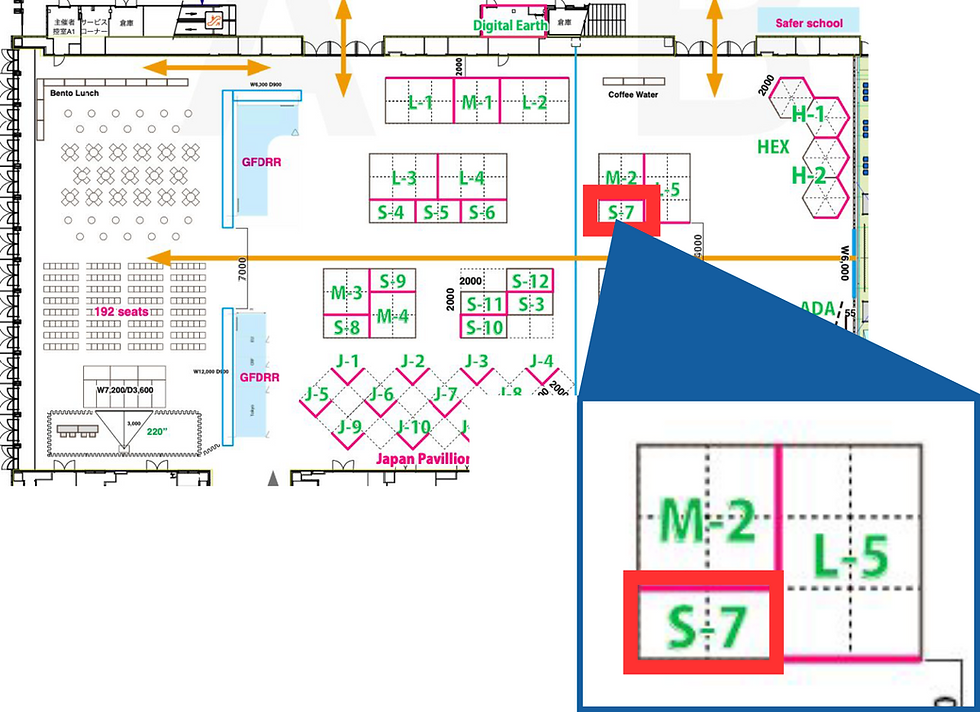 |  |
LOCATION
HOTEL
TRANSPORTATION
Taxi
Taxis in Japan are quite expensive and you may prefer other public transportation services. However, in smaller cities or late evening hours, they may be the only solution to get to your destination. Taxi stands may be easily found outside airports and train stations but you also may flag down a taxi in the street. You may also use a taxi app or request the reception of your hotel to call a taxi for you.
A couple of things to know when using a taxi in Japan:
A plate on the dashboard in the lower corner of the windshield indicates whether a taxi is vacant or not, red indicates vacant, green indicates occupied, exactly the other way around you may expect.
When boarding and getting out of the taxi, DON'T touch the door, the left rear door is opened and closed automatically by the driver.
If you don't speak Japanese, the easiest thing to do is to hand over the written address of your destination to the driver - or to show it on a map, if available, as the address system in Japan can be very confusing, even for the taxi driver. Most of the taxis accept credit card payments.
If you use cash, try to avoid using large bills for small amounts as the driver may not have enough change.
Last but not least: Tipping is not expected/done in Japan.
Local buses in Himeji (Shinki Bus)
Using the local bus, Shinki Bus may be the most convenient solution to move in Himeji. You will need cash or a rechargeable IC card https://www.japan-guide.com/e/e2359_003.html before boarding the bus. You may also purchase special fare tickets in advance at the bus station ticket office.
Check the destination on the front and side of the bus. Always board the bus at the rear door and exit at the front door. When paying using cash, take a number from the small box next to the entrance and keep it with you; you will need to drop the number together with your cash in a box near the driver when getting off the bus. When paying with an IC card, hold the card to the reader near the entrance until you hear an acoustic signal. If you purchased a special fare ticket in advance, take a number as if you'd pay with cash; when getting off the bus, drop the number in the ticket box next and show the special ticket to the driver.
A good solution for foreign travelers is the Hyogo Amazing Pass, a prepaid one-day ticket that allows you to use all orange Shinki Buses for 1,000 JYN for one day. You can purchase your Hyogo Amazing Pass online here and only need to show the screenshot of your mobile ticket when getting off the bus.
RESOURCES
Conference resources for downloading
Videos
Gallery
Maps
Recording
Videos

Gallery
